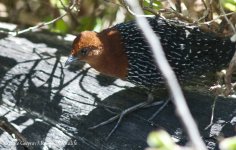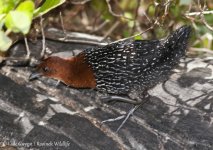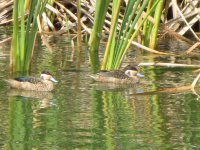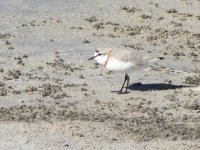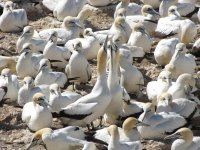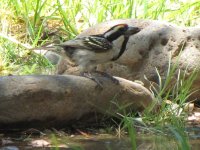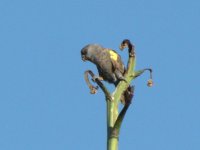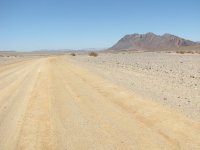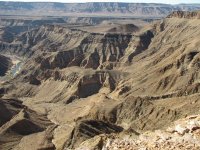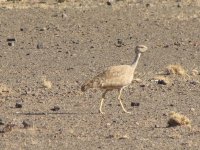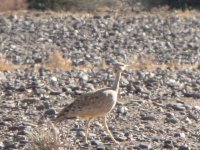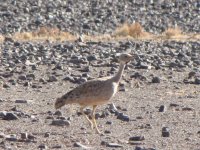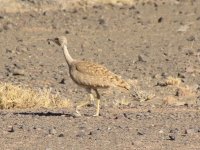Larry Sweetland
Formerly 'Larry Wheatland'
Oops forgot we saw a Pergrine yesterday
384 Peregrine
Thanks Mike, the finfoot was certainly a great surprise, and after we thought we'd run out of chances.
Today we picked up another Nissan Micra from Budget car rental. It cost more to get the cover letter required to take the vehicle over the namibian border than we expected. An extra 100 quid. Ouch. We did have time this afternoon to potter down to the bottom of the cape, and a few more birds trickled in.
Our first stop was Kommetjie, where there were spectacular numbers of terns on the rocks just off the beach. I figured over 1000 Common Terns, not quite so many Greater Crested Terns and a few Sandwich Terns. I spent a little while going through the smaller terns, hoping a late Antarctic might stand out with a red bill, but alas no. 3 Bank Cormorants were picked out among the greater numbers of the other 3 cormorant species, one close enough to see it's white iris. There were lots of African Black Oystercatchers and a few Blacksmith Plovers, but I couldn't locate any of the hoped for White-fronted Plovers on the beach. A Bokmakierie was a nice surprise in the scrub by the beach, neatly finishing off the bush-shrike page in the field guide!
We then headed down to the bottom of Africa, using the wildcard for free entry to the NP. A stop at Buffelsfontein turned up Fiscal Flycatcher, with Fiscal Shrike for comparison, and there were several Cape Sugarbirds and Malachite Sunbirds in this area too. Isn't it great when you hear an unfamiliar song and guess correctly what it might be and then the bird pops up and it's a new one? That's not what happened here. Isn't it also great when you can't guess what something might be, then up pops a lifer you're not expecting it to be? That's what happened here with Cape Grassbird.
The plant life on the cape is very unusual, and quite beautiful. Plenty of really smart dragonflies and butterflies too. We also saw a little group of zebra that look very different from the ones in Kruger.
385 BANK CORMORANT
386 Common Tern
387 BOKMAKIERIE
388 FISCAL FLYCATCHER
389 CAPE GRASSBIRD
looking forward to tomorrow....
384 Peregrine
Thanks Mike, the finfoot was certainly a great surprise, and after we thought we'd run out of chances.
Today we picked up another Nissan Micra from Budget car rental. It cost more to get the cover letter required to take the vehicle over the namibian border than we expected. An extra 100 quid. Ouch. We did have time this afternoon to potter down to the bottom of the cape, and a few more birds trickled in.
Our first stop was Kommetjie, where there were spectacular numbers of terns on the rocks just off the beach. I figured over 1000 Common Terns, not quite so many Greater Crested Terns and a few Sandwich Terns. I spent a little while going through the smaller terns, hoping a late Antarctic might stand out with a red bill, but alas no. 3 Bank Cormorants were picked out among the greater numbers of the other 3 cormorant species, one close enough to see it's white iris. There were lots of African Black Oystercatchers and a few Blacksmith Plovers, but I couldn't locate any of the hoped for White-fronted Plovers on the beach. A Bokmakierie was a nice surprise in the scrub by the beach, neatly finishing off the bush-shrike page in the field guide!
We then headed down to the bottom of Africa, using the wildcard for free entry to the NP. A stop at Buffelsfontein turned up Fiscal Flycatcher, with Fiscal Shrike for comparison, and there were several Cape Sugarbirds and Malachite Sunbirds in this area too. Isn't it great when you hear an unfamiliar song and guess correctly what it might be and then the bird pops up and it's a new one? That's not what happened here. Isn't it also great when you can't guess what something might be, then up pops a lifer you're not expecting it to be? That's what happened here with Cape Grassbird.
The plant life on the cape is very unusual, and quite beautiful. Plenty of really smart dragonflies and butterflies too. We also saw a little group of zebra that look very different from the ones in Kruger.
385 BANK CORMORANT
386 Common Tern
387 BOKMAKIERIE
388 FISCAL FLYCATCHER
389 CAPE GRASSBIRD
looking forward to tomorrow....




